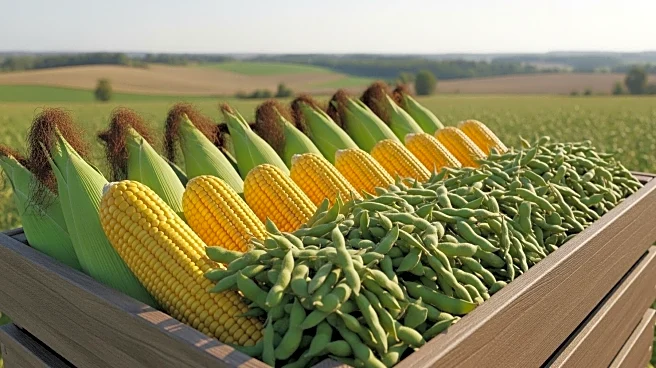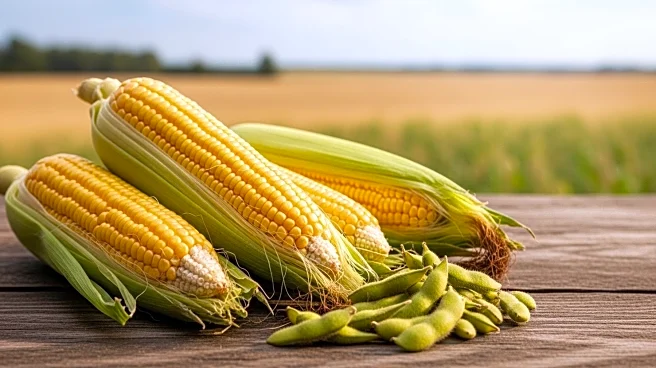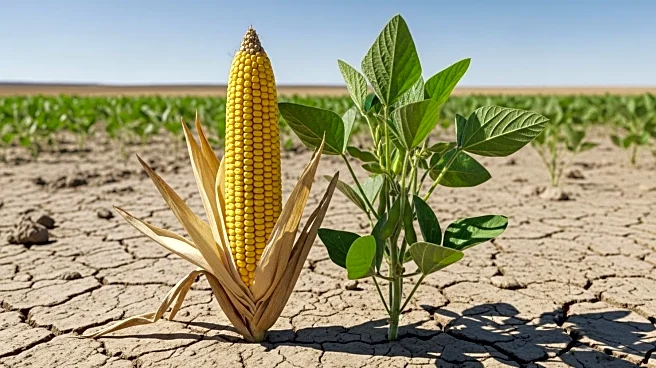What's Happening?
The United States Department of Agriculture (USDA) has released its September 2025 World Agricultural Supply and Demand Estimates (WASDE) report, which indicates an increase in U.S. corn and soybean production for the 2025/2026 period. The USDA has adjusted its projections, showing higher planted and harvested acres for both crops, despite a reduction in yield. Specifically, U.S. corn production is forecasted at 16.8 billion bushels, with a 1.3 million acre increase in harvested area, marking the highest since 1933. Soybean production is projected at 4.3 billion bushels, with a slight increase in harvested area. The report also notes changes in ending stocks, with corn stocks slightly lower than expected and soybean stocks higher. Wheat ending stocks are pegged lower than anticipated. These adjustments reflect the USDA's response to current agricultural conditions, including export competitiveness and early-season demand.
Why It's Important?
The USDA's revised estimates have significant implications for U.S. agricultural markets and stakeholders. The increase in corn and soybean production could influence market prices, export dynamics, and domestic supply chains. Higher production levels may lead to increased exports, particularly for corn, which is projected to reach a record 3 billion bushels. This could enhance the U.S.'s competitive position in global markets. However, the adjustments in yield and ending stocks suggest potential volatility, especially if further yield reductions occur due to factors like southern rust affecting corn. The report's findings are crucial for farmers, traders, and policymakers as they navigate the agricultural landscape, balancing supply, demand, and pricing strategies.
What's Next?
The USDA's report sets the stage for further analysis and adjustments in future forecasts. As the harvest progresses, more accurate yield data will become available, potentially leading to further revisions in production and stock estimates. Stakeholders will closely monitor these developments, particularly the impact of southern rust on corn yields. The agricultural community will also assess the implications of increased competition in soybean exports from countries like Russia, Canada, and Argentina. These factors will influence market strategies and policy decisions in the coming months.












